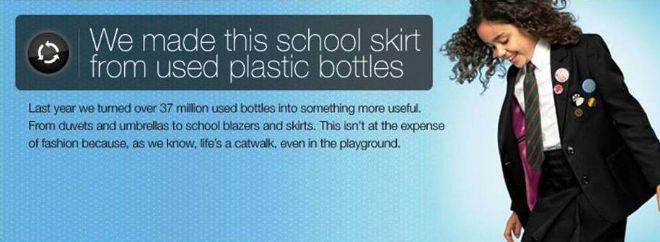Following the introduction of a recycled fleece in 2008, M&S introduced school clothing made from recycled plastic bottles, helping customers to 'do their bit' for the environment. M&S schoolwear is now washable, non-iron, Teflon-coated and anti-bacterial.
The recycling process
Firstly, the bottles are sent to a sorting centre where they’re separated into three different types of plastic – PVC, HDPE and PET. The bottles are sorted and squashed together into large blocks. Then they're taken to a reprocessing plant where they’re separated into individual squashed bottles.
Each bottle is washed to remove labels and dirt, dried, then ground into small flakes. The flakes are melted and squeezed through tiny holes, through which molten polyester emerges. As it solidifies it’s cut into small pellets which are then stretched to make thread. After this, the thread is knitted to produce a roll of fleece fabric, which is dyed and used to make clothes.
Zips, buttons and trims are then fitted, although these are not made from recycled materials.
Glossary
Anti-bacterial - something that destroys bacteria (types of germ) or stops them from growing
Molten - the liquid form of a solid material after it has been heated up
PVC, HDPE and PET - the main types of plastics used for drinks bottles and other plastic containers
Teflon - a waxy material used to coat cooking utensils to prevent food sticking to the surface
A text-only version of the 1992 magazine article, and a Press Release about the recycled schoolwear are both available to download as PDFs in the Resources section.
